San Diego Opera holds the world premiere of "El último sueño de Frida y Diego" ("The Last Dream of Frida and Diego"), a new Spanish-language opera that explores the relationship between iconic Mexican artists Frida Kahlo and Diego Rivera.
Artist Frida Kahlo
A picture might be worth 1,000 words, but a Frida Kahlo self-portrait speaks volumes about her life.
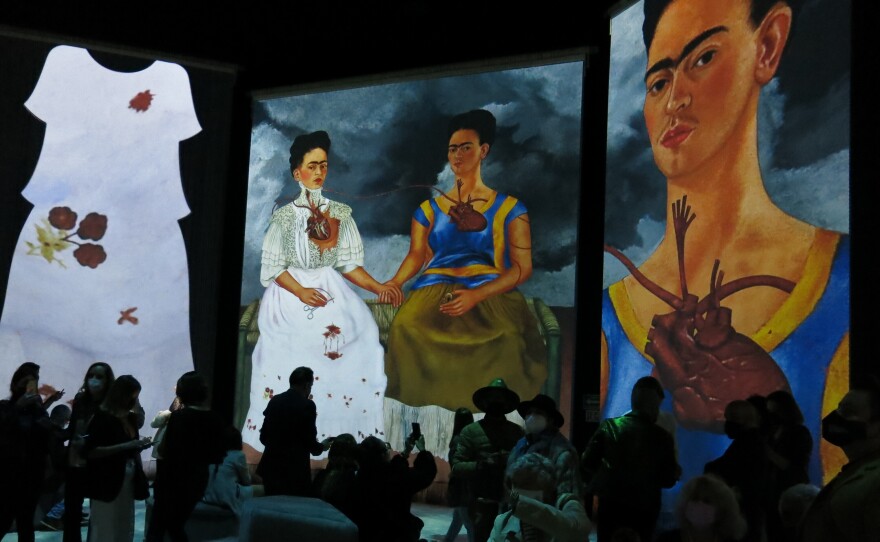
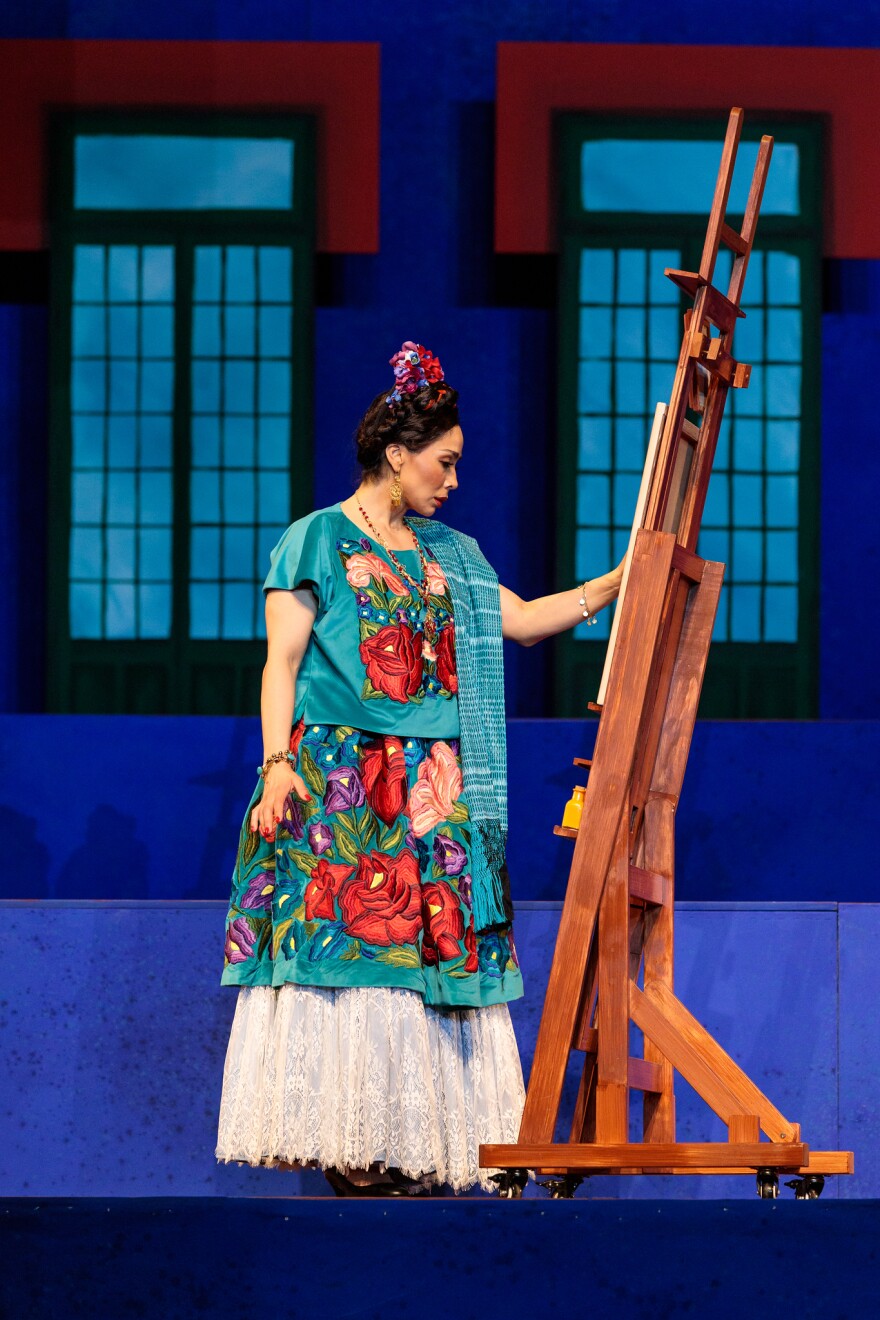
"She painted her autobiography always," director Lorena Maza said. "Her art was so personal. And I think the more personal, the more universal. She depicted herself completely as a woman, and also she had relationships with her own sex, and she was disabled. So she can represent the strength. She was never a victim. She dignified herself through her painting."
Kahlo’s intensely personal, often witty and always boldly imaginative paintings reveal more about her life experiences than any carefully researched biography.
"She just painted her reality," said mezzo-soprano Guadalupe Paz who sings the role of Frida. "People thought it was, like, surrealism and it was not. She was very original in that sense. And I think that appeals to us because when we see a painting of her, it's like she's talking or telling us a story about that moment in her life."
Turning Kahlo's life into an opera
Bringing Kahlo’s story to life through opera fell into the hands of Grammy Award-winning composer Gabriela Lena Frank and Pulitzer Prize-winning librettist Nilo Cruz.
"I heard a piece that Gabriela had composed, which the theme of it was The Day of the Dead," Cruz said. "And when I heard the piece and heard the beautiful music, I said to her that is the entry into this world, and we should not do a biopic of Diego and Frida, but maybe, perhaps Frida coming back to the world on the Day of the Dead."
Día de Muertos or Day of the Dead gave them something to artistically build on says Frank.
"Day of the Dead is just incredible," Frank said. "There's an element of fantasy, there's an element of fiction that is more real than a nonfiction and you have to stretch as an artist to be able to imagine a universe that doesn't really exist, but seems very authentic."
Maza added that the lives of Kahlo and Diego have everything you need in an opera: "They do have extraordinary lives and they are extraordinary artists. So you have politics, you have sex, you have love, you have passion, you have art, you have death. It's all there."
The dramatic trigger for the story is Rivera’s last day on Earth.
"And he comes to the graveyard on Día de Muertos to invoke Frida and call her back to help him cross to Mictlan, to the underworld, the Aztec underworld," Maza said.
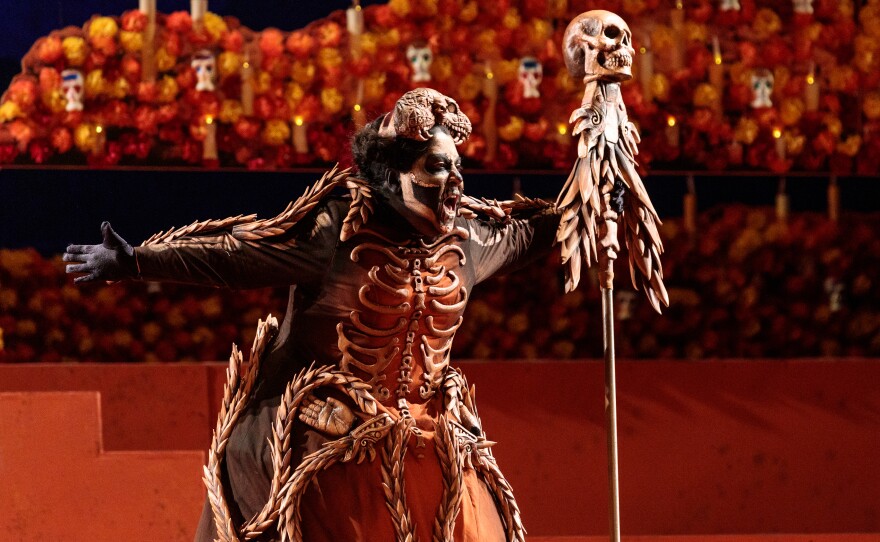
In the opera, Frida returns from the dead without any of the pain she experienced in the real world from a horrific accident and dozens of surgeries. But she re-enters the world of the living with a warning:
"'Don't you dare touch Diego. Don't you dare touch your painting brushes,'" Maza said. "'You cannot do that because if you do that, you'll feel the agony again.'"
But pain defined Kahlo’s life and her art and the opera brings that to vivid life.
"The relationship that she has on stage in this opera with the paintings is so beautiful because in the moment that she finds the easel, she revisits the pain," Paz said.
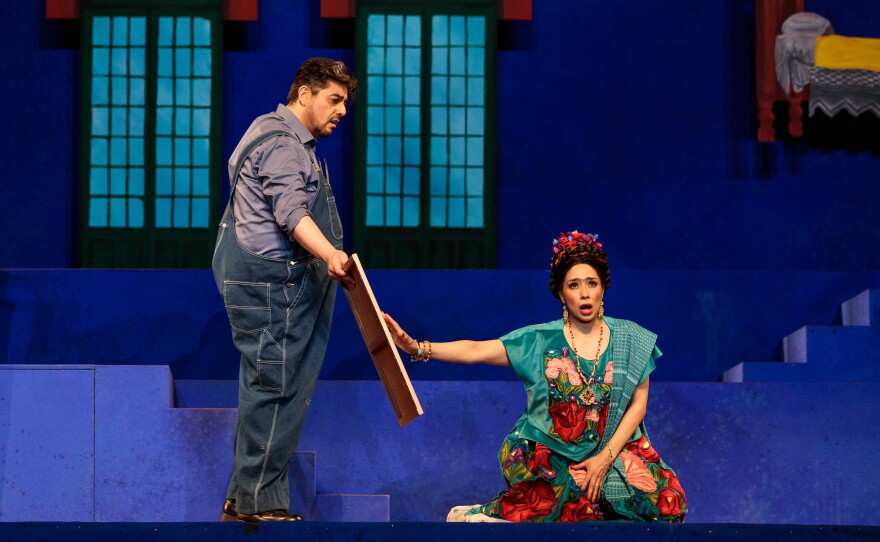
Kahlo discovers that she cannot paint without the pain. Her suffering and her art were impossibly intertwined. It was the pain when she was alive that really was her inspiration for painting.
Staging a world premiere
New operas are not commonplace.
"There are even fewer operas in Spanish and even fewer operas in Spanish that represent or depict two Mexican cultural figures like Frida and Diego," Maza said. "So it has many elements to make this a very unique and exciting project."
"I don't understand why there are not so many operas in Spanish," Cruz added. "Because it's a language that really sings beautifully."
Frank, who is not a native Spanish speaker, loved that the opera was in Spanish.
"I have done my best vocal writing in Spanish because Spanish is special, Spanish is romantic and Spanish puts me in my imagination," Frank said. "English is like ho-hum, mundane. I use it every day. So I was very glad that they asked us to do this in Spanish and I knew it was going to pull out better music."
For Frank and Cruz this is more than just a world premiere, it's the culmination of 15 years of work that has been the backdrop of their entire relationship. It is also an honor for them to bring these artists to audiences in what they hope is a new light that befits the creativity of Kahlo and Rivera.
"I think they would have been more taken with this fanciful take on their relationship and their lives than simply another biography," Frank said.
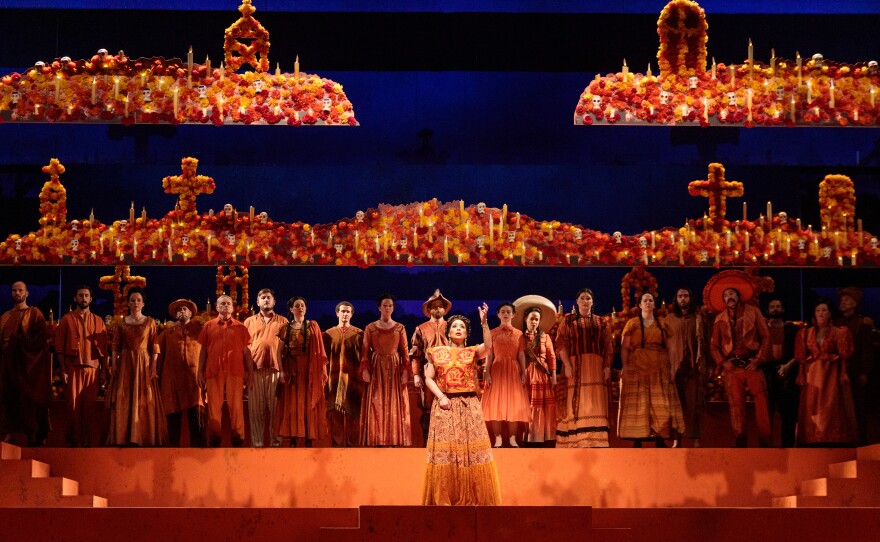
Kahlo's legacy
Although Kahlo died almost seven decades ago her art remains vibrantly alive in pop culture where her depictions of femininity, sexuality and disability all seems strikingly relevant.
"What is amazing is that every new generation takes her image and makes it their own again and again and again," Maza said.
And Kahlo would likely adapt well to the world today.
"I think if Frida were living nowadays, she would probably also be a performance artist in some ways, where the body is part of the art. I'm just thinking of the pain, the body," Cruz said.
"She would have an Instagram account she'd be sharing with the world every day," Frank added.
San Diego Opera is poised to introduce its Frida Kahlo to the world this weekend in a Spanish-language opera that sings the praises of Mexico’s iconic artist in a fresh new way.
"El último sueño de Frida y Diego" ("The Last Dream of Frida and Diego") performance dates
Saturday, Oct. 29, 2022 at 7:30 pm
Tuesday, Nov. 1, 2022 at 7:30 pm










